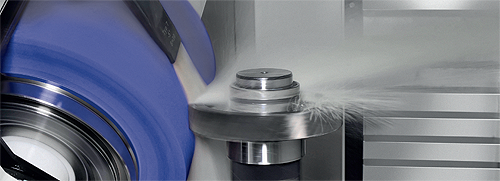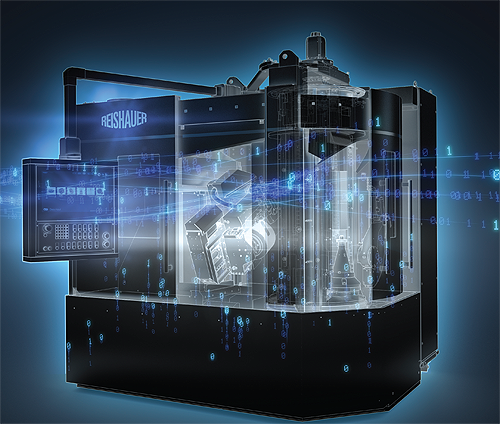Reishauer
Black box no more – making generating gear grinding transparent
Only high-accuracy gears guarantee the proper functioning and reliability of transmissions in cars, aircraft, and industrial machinery. Modern gearboxes have to deliver reliable transfer of torque at high power density, to feature low weight design and to function at low noise emission. From an economic point of view, expenditure must be low for both costs per piece and life-cycle costs. At the same time, uncompromisingly high part quality and process stability must be maintained at a constant geometrical and dimensional quality.
Continuous generating gear grinding has established itself as the most productive process for the hard-finishing of high-precision gears. Generating gear grinding is based on a dressable vitrified bonded threaded grinding wheel, also called a grinding worm. In simple terms, the kinematics can be understood as a worm drive that features several machine axes moving simultaneously to grind the gear profile. A high-precision diamond roll dresses the grinding worm in such a way that the wheel profile generates the final gear geometry. The generating process delivers constant accuracy at high production volumes. The high output means, however, that in-process measuring, as known in cylindrical grinding, for example, is not possible as the machine axes movements are far more complex.
As the continuous gear grinding machine can produce far more parts per unit of time than a measuring machine can measure, the parts have to be measured outside the machine. Furthermore, not all parts can be measured, and users have to rely on sample measurements. However, even if the two pieces measured at either end of a sample lot prove to be within tolerance, one could never be sure if all parts of that chosen sample are within tolerance. Therefore, there is a risk that parts that are not within tolerance end up in transmissions.
Reishauer not only builds machines but also manufactures the necessary tooling such as threaded wheels, diamond dressing tools, workholding, and coolant nozzles. When all these elements are in place, the grinding process can be made stable and to deliver high-quality workpieces. As the Greek philosopher, Aristotle, stated: “Every tool achieves perfection by serving one, instead of many purposes.” All of which Reishauer adheres to and this gives it unmatched insight into the grinding process, and for this reason, Reishauer can now characterise and monitor generating grinding – from workpiece to workpiece – like never before. Monitoring is not limited to workpieces. Automatic testing cycles measure and evaluate the machine tool itself. The machine and the process have become more transparent, and the title ‘Black box no more’ was chosen for this very reason. The Merriam-Webster dictionary defines a black box as ‘a usually complicated device whose internal mechanism is usually hidden from or mysterious to the user.’

Process monitoring
The dressing and grinding intensities are measured and monitored by smart real-time data processing and tested algorithms. For each workpiece, all data generated during dressing and grinding are recorded and stored in a database and remain 100 per cent traceable. Using the stored process and tooling data, including workpiece identification via DMC, offers the means of comprehensive analysis. Due to process interaction, and using preset evaluation limits, workpieces that exceed or fall short of these limits are automatically removed.
Component monitoring
Recurring automatic testing cycles measure and evaluate all the relevant grinding machine axes involved in the process, and thus enables early detection of electromechanical deviations. Maintenance costs are optimised both in terms of planning and diagnosis, and some potential EOL anomalies may be avoided.
Summary of features:
- OEE
- Production data acquisition
- Process data analysis
- Analysis of the state of electromechanical components
- Usage data handling (RFID)
- Communication with measuring machines (GDE, and others)
- Preventive maintenance
- 100 per cent traceability
